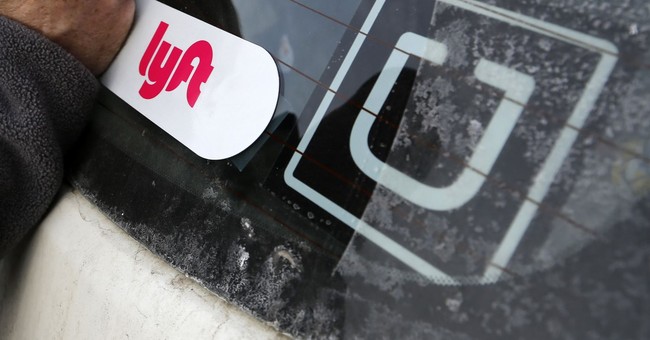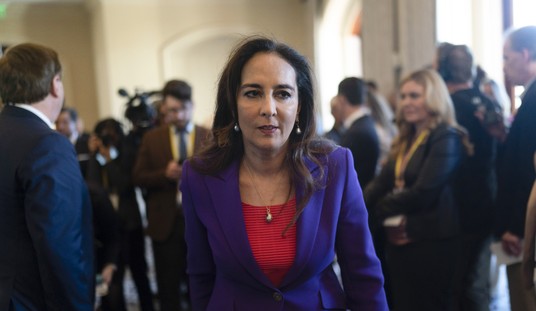
As I covered Thursday, both Uber and Lyft are poised to suspend operations in California starting August 20 after a state judge ruled that they must reclassify all drivers in the state as employees by that date because of AB5, the state’s new anti-freelancing law. This isn’t exactly what AB5 sponsor Asm. Lorena Gonzalez-Fletcher (D-Teamsters) wanted; she hoped to turn all drivers into new, dues-paying union members.
In a tweet promoting the story, I pointed out that a California with no Uber or Lyft would hurt elderly people and the working poor the most.
This is going to hurt elderly people and the working poor the most, who rely on Uber & Lyft for transportation to med appts, grocery store, and work. But Lorena & Veena don't care. At all. https://t.co/ggQBMgRwGy
— Jennifer Van Laar (@jenvanlaar) August 13, 2020
Quite a few AB5 proponents had a problem with my characterization. Here are a few replies to that tweet:
@jenvanlaar You have got to be kidding! The “working poor” can not afford Uber or Lyft, but rather rely on a bus or bicycle. The elderly have transit access, via Medicare or take the bus as well…and surely aren’t spending limited, monthly Social Security on Uber/Lyft.
— Doug Huber (@huberddh) August 14, 2020
Actually, Doug, as you’ll read below, many healthcare providers and municipalities have partnered with Uber and Lyft to provide transit to the elderly or in areas where bus service doesn’t make sense.
What did elderly & working poor (both of which I have been) do *before* Uber & Lyft? I walked, took the bus, cadged a ride, took a cab – all solutions still available.
— dizzheart (@dizzheart) August 13, 2020
Taking a cab is sometimes double the cost of an Uber or Lyft. Walking? It’s 110 degrees in most of California today. And is this tweeter seriously suggesting one take germ-filled public transportation in the midst of a pandemic as a solution? Sounds logical.
A few other Twitter users mentioned that DUI’s could increase if Uber and Lyft weren’t available.
So, are Uber and Lyft the bad guy, or do their services offer society a net positive in addition to providing gig opportunities for people who want to earn extra dollars? Turns out studies have shown that DUI arrests were “down sharply” in many areas after Uber and Lyft entered the market, including this study from California, performed by the notoriously liberal UC Davis:
Studies by the University of California at Davis and Moll Law Group found that
arrests had declined by 32 percent in San Diego, 28 percent in San Jose, 26 percent in Sacramento and 14 percent in both Los Angeles and the San Francisco-Oakland area in the two years after ride sharing began in each of the areas.“This makes sense to me,” said Sgt. Michael Trudeau, a 20-year veteran of the San Jose Police Department. “Our traffic enforcement unit has seen a huge increase in Lyft and Uber drivers come through our DUI checkpoints, and I know from personally observing their clients that I’m very thankful many chose not to drive themselves.”
In Georgia, while prosecutors pursued DUI convictions “with the same frequency” as they did before Uber and Lyft entered the market, convictions dropped 34 percent during that time period:
During the five-year period between 2007 and 2012, Georgia DUI convictions dropped by 16 percent. The following five years, from 2012 to 2017, impaired driving convictions fell by over 34 percent — a decrease of almost 12,000 convictions. What’s behind this significant decline? In Cobb County, Assistant Solicitor General Steven Ellis believes that “we have fewer impaired drivers on the road because of ride-share services.” Indeed, Uber expanded into Atlanta in 2012 and Lyft in 2013. Ever since these two services entered the Georgia market, DUI convictions have declined at around twice the previous pace.
What about elderly people or those needing to attend medical appointments? I had my own anecdotal evidence since I drove for Uber and Lyft in 2018 and 2019, and about a third of the people I gave rides to were elderly people running errands (grocery store, Costco) or going to or from a medical appointment.
Uber and Lyft are both players in the Non-Emergency Medical Transportation (NEMT) field. If you’re not familiar with NEMT, here’s a definition:
NEMT is crucial for facilitating access to care for low income beneficiaries who do not have reliable affordable means of getting to health care appointments, people with disabilities who have frequent medical appointments, and anyone who has limited public transit options and long travel times to health care providers. Organizations conducting clinical trials also usually provide NEMT to participants.
NEMT services have been provided since the inception of Medicaid in 1966, which requires that transportation is provided to beneficiaries to and from medical services.
That’s the “formal” NEMT field; obviously there are also people who use rideshare services on an informal basis to get to and from medical appointments, especially if they won’t be able to drive due to eye dilatation or anesthesia/medication side effects.
Uber and Lyft entered the NEMT field in 2016 and created an immediate positive effect:
In April 2016 we saw Uber announce a partnership with Circulation, a digital transportation platform, to provide 3rd party, healthcare-related ride requests. Circulation noted only 8% of its patients reported no-shows with Uber, compared to 25–50% of no-shows seen in the NEMT industry as a whole. Circulation touts that they ensure that 95% of patients arrive to their appointments on time and that they save participating health plans and providers up to 50% on rides.
Lyft-based NEMT services were implemented systemwide, including Southern California, at CareMore Health, which provides Medicare Advantage plans. A study of the implementation found the Lyft rides to be on-time, with low wait times for pickup after the appointment, and that almost all patients felt safe or very safe during their ride – in addition to a systemwide increase in ride availability and decreased cost:
- On-time performance (rides arriving within 20 minutes of scheduled pick-up time) for Lyft-based C2C rides was 92 percent, compared to 74 percent for non-Lyft rides.
- The average wait time for Lyft-based C2C rides was 9.2 minutes, compared to 16.6 minutes for non-Lyft C2C rides, a 45 percent decrease.
- 96 percent [of patients surveyed] reported feeling “Safe” or “Very Safe” during their ride and 98 percent reported being “Satisfied” or “Very Satisfied” with the service (timeliness, cleanliness, and professionalism of the driver).
- Lyft-based C2C rides cost CareMore 39 percent less, on average, than non-Lyft C2C rides. Reducing per-ride costs allowed CareMore…to provid[e] an additional 28,000 rides (a 12 percent increase) at no additional cost to the system.
Just before the pandemic hit, Uber and Lyft were expanding into more social justice-focused partnerships. As Forbes reported on March 5, 2020:
On Thursday, Lyft said it was partnering with a fast-growing “social care coordination platform” called Unite Us that uses its technology to connect healthcare and providers of social services. Financial terms of the partnership aren’t being disclosed of Lyft’s partnership with Unite Us, which has other high-profile deals including one formed last year with CVS Health and its Aetna health insurance unit.
Meanwhile, Uber Health this week said it was rolling out several new “patient-centric” product features that include “direct driver messaging” that allows healthcare providers to message drivers directly on their driver app in what the ride-share company hopes will make pickup easier.
In addition, many senior living facilities have partnered with Uber or Lyft as a way to enhance their shuttle services. One Bay Area senior was featured in a CNBC story:
Carolyn Morrow, 75, suffers from a pinched nerve in her back that affects her walking, and so at least once a month she visits her doctor several miles away from her senior living community in Redwood City, California.
Morrow uses her community’s shuttle service when she can, but it often stops running before many of her doctor’s appointments. When that happens, Morrow uses Lyft. Her assisted living community, Brookdale Redwood City, formed a partnership with the ride-hailing company in 2016.
In California specifically, studies have shown that the availability of rideshare apps has benefited people of color and those who can’t afford to own a car. A 2017 UCLA study focusing on Los Angeles County found that the existence of Uber and Lyft increased mobility in poor neighborhoods:
The most basic finding is striking: Virtually no neighborhood in the country’s most densely populated urban area has been left unpenetrated by Lyft. The company’s drivers serve 99.8 percent of the population of L.A. County. That in itself suggests that communities aren’t being systematically excluded.
Contrary to the belief that ride-hailing primarily serves the affluent, it appears neighborhoods with low rates of car ownership—which tend to be populated by people of color—actually see more pick-ups and drop-offs than others.
For those who can’t own vehicles due to financial limitations, research like this suggests that ride-hailing is indeed a lifeline.
And now, because greedy Sacramento politicians who wanted a payoff to their union backers were able to find a small percentage of drivers who wanted to change a “gig” opportunity into full-time employment (instead of, I dunno, going and finding a full-time job), California’s low-income communities, people with chronic illnesses, and elderly people are set to lose a “lifeline.”














Join the conversation as a VIP Member